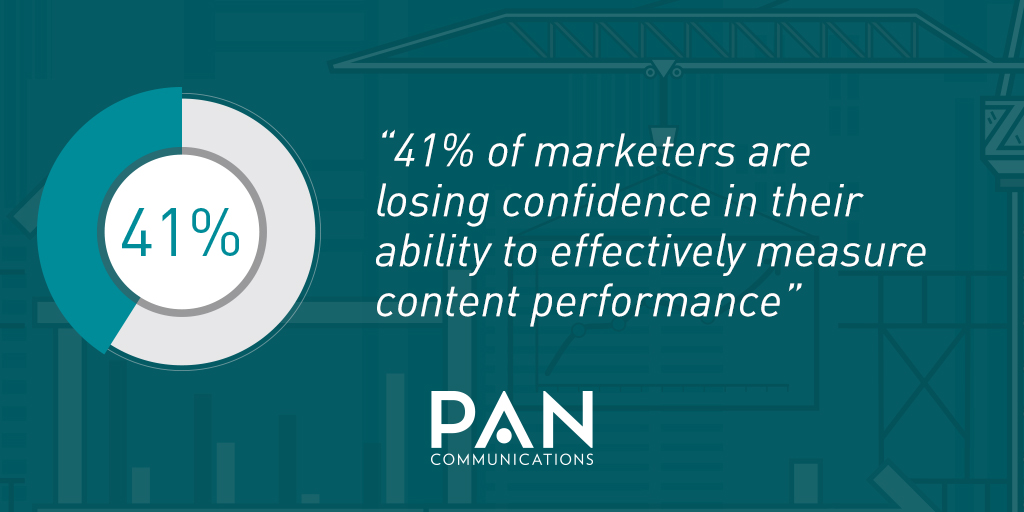PAN Communications 11 Jan 2018 // 2:26PM GMT

With limited marketing dollars and resources, marketers are tasked with optimizing their budget and spend by showing ROI from every martech investment, outsourced resource, campaign and channel operation. With so many moving parts it can be a challenge to take a holistic view of their entire operations at hand.
Many are still looking at their communication efforts – analyst, media, influencer relations; content marketing; creative and social media – as separate frontiers, achieving different goals and expected deadlines. Marketers should be striving for a more cohesive alliance, and this must include measurement.
Now, that’s a lot of data. So, how should today’s CMO make sense of it all to ensure marketing dollars are aligned with overall business and revenue goals?
Use this step-by-step guide to execute a successful integrated measurement strategy.
Want to dig a little deeper into this integrated approach? Download PAN’s new eBook ‘Build a Winning Measurement Strategy from the Ground Up’.
1. Measurement That Leads to Impactful Results
The single biggest challenge faced by B2B marketers as they set budgets is “attributing program spend to revenue results,” according to a Forrester survey. So, it’s not a matter of if you should be measuring and aligning your marketing metrics with revenue, but rather how agile you can be in starting or improving your measurement strategy.
Today’s digital mavens are all about open rates, click-through traffic, tweets, retweets, followers, fans and engagement momentum. But as many finance and accounting types say, “you can’t put clicks in the bank.” Dumping a bunch of MQLs over to the sales department isn’t going to be your solution either.
In today’s world of “big data,” measuring the true value of your marketing is readily available; it just takes a reframing of mindset. The problem with “old math” is that it reinforces the perception that marketing is a cost center, not a revenue generator. New marketing math validates that marketing supports revenue goals in a very real and measurable fashion.
Break down silos between functional work groups (PR versus digital) and between your in-house marketing team and cross-functional agencies, then work together toward a common goal: revenue. Drive the evolution of your departments by funneling the right qualified leads, which will lead to more accurate measurement results that show impact.
2. The Landscape of Integrated Measurement
It’s time to move away from generic measurements and get to true ROI (Return on Investment — or Return on Impact). Think of it as a continuum, starting with your organization’s big picture revenue goals and drilling down to the granular, tactical results.
- What does this mean for your business?
- New business revenue generated
- Increased revenue per account
- Upsell opportunities
- Find efficiencies for increased net revenue
- Superior customer experiences
Start connecting the dots between your marketing KPIs and meaningful business objectives, like revenue, sales and ROI – metrics the C-suites will get excited about. This integrated approach leads to informed decision making based on program performance.
3. Turning Measurement into Business Intelligence
By taking a true integrated approach to both implementation and measurement means that you and your team will be constantly measuring, monitoring and adapting your marketing strategy based on analytics and insights. Use this stream of knowledge to make more accurate decisions on your marketing spend for the next quarter.
Here’s how to make your way through the data jungle:
- Utilize the right marketing technology stack. As of April 2017, there were over 7000 vendors in the martech space, according to Carlton Doty, Vice President, Group Director at Forrester. Focus on which tools will contribute to positive ROI and be realistic about your team’s capabilities by setting SMART goals and expectations. If you’re not sure that your in-house team can handle a martech stack, consider hiring an integrated agency to help.
- Divide roles and responsibilities between your agencies and your in-house team. Your organization may lack the skillsets necessary to monetize certain investments. This means you must decide on which in-house capabilities need a boost and which activities are best outsourced to dedicated experts. Working with an integrated agency can help ensure you have the right mixture at your disposal.
- Take a 360-view of your program and act on the results. Don’t fix what isn’t broken. Keep in mind those limited dollars and hours, acknowledge what’s working well and focus your energy on what needs attention. Then rework your strategies and budget to improve marketing in channels with low performance.
Measuring the effectiveness of your ongoing programs 365 days a year is essential to keeping integrated efforts in play. The right tools, the right team and a sense of urgency spurred by timely data help to ensure a growing connection with your target audience.
When programs are evaluated on a consistent basis, it guarantees planned execution is in line with executive expectations. And that allows all of us to sleep a little better. To get started, download ‘Build a Winning Measurement Strategy from the Ground Up’.



































.jpg)














